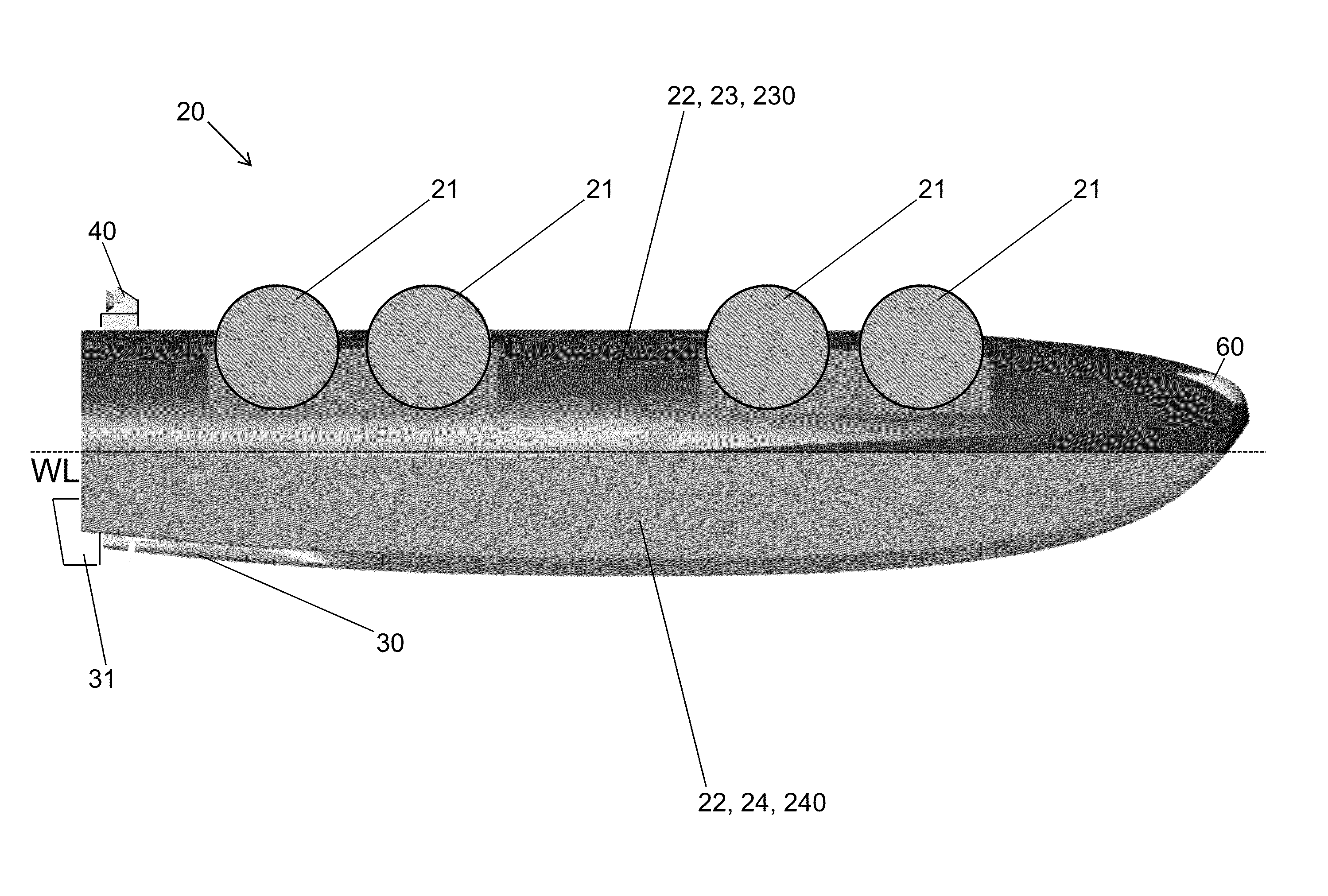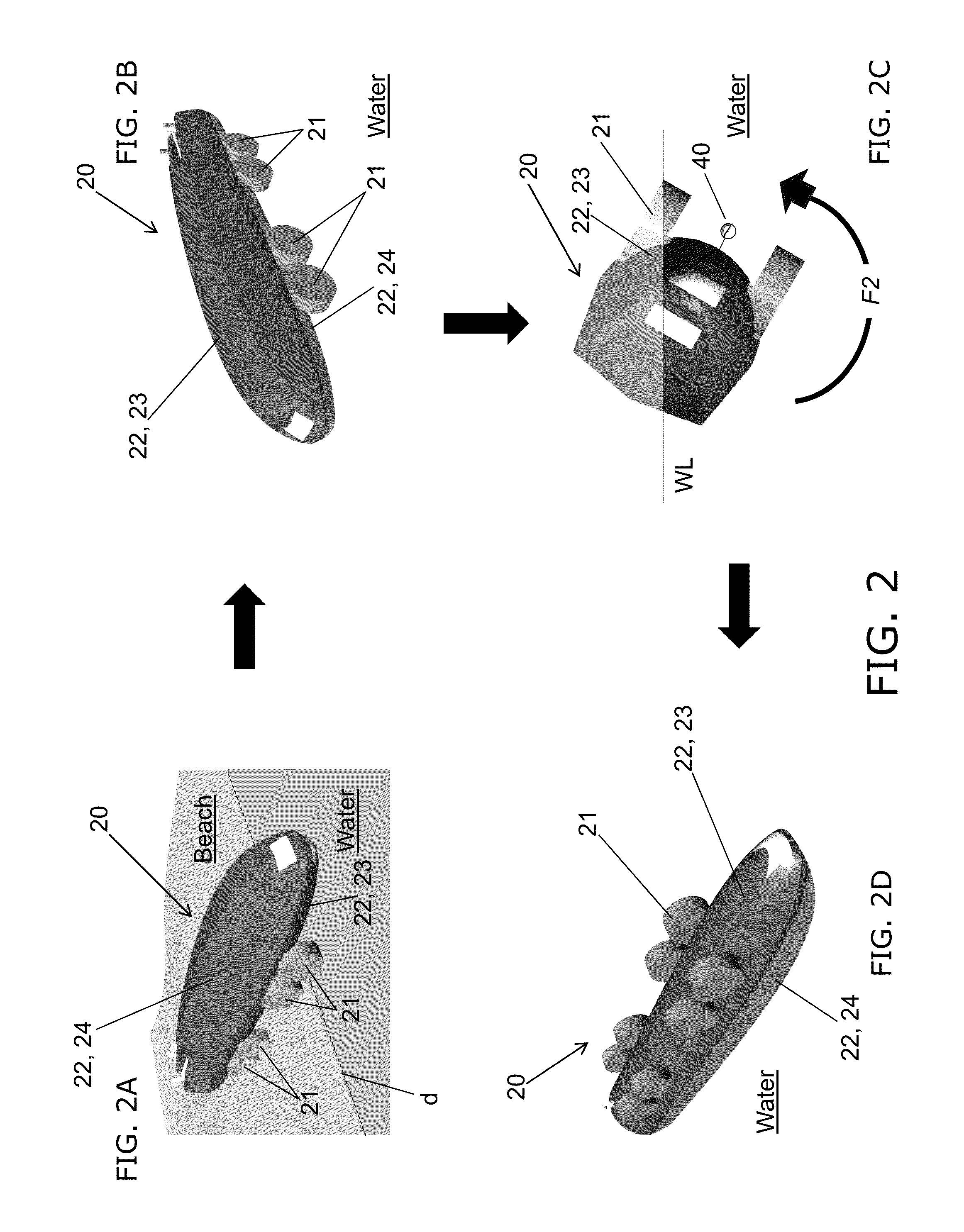Transformable teleoperated amphibious fuel truck
a fuel truck and transceiver technology, applied in the field of amphibious marine vessels, can solve the problems of low fuel drop rate, low fuel supply efficiency, and low fuel supply efficiency of parachutes, and achieve the effect of reducing the cost of fuel supply
- Summary
- Abstract
- Description
- Claims
- Application Information
AI Technical Summary
Benefits of technology
Problems solved by technology
Method used
Image
Examples
Embodiment Construction
[0027]Referring now to the figures, the present invention's TTAFT vehicle 20 has eight wheels 21 and a hull 22. Wheels 21 are arranged in four coaxial port-and-starboard pairs. Especially as illustrated in FIG. 4 and FIG. 5, inside the hull 22 are a “wheel-side” compartment (e.g., tank) 23 and a “smooth-side” compartment (e.g., tank) 24. Horizontal solid (continuous) bifurcation wall 26 divides (e.g., approximately bisects) hull 22 into two longitudinal hull sections, viz., 230 and 240. Compartments 23 and 24 are separated by horizontal wall 26. Compartment 23 is enclosed by the wheel-side hull section 230. Compartment 24 is enclosed by the smooth-side hull section 240.
[0028]Either or both compartments may have a lining 28 to hold liquid cargo, or to serve as a water ballast tank or bladder for increasing stability of inventive vehicle 20, or for maintaining cargo liquid purity. Ballasting may be particularly useful in smooth-side compartment 24 while the inventive vehicle is in whe...
PUM
 Login to View More
Login to View More Abstract
Description
Claims
Application Information
 Login to View More
Login to View More - R&D
- Intellectual Property
- Life Sciences
- Materials
- Tech Scout
- Unparalleled Data Quality
- Higher Quality Content
- 60% Fewer Hallucinations
Browse by: Latest US Patents, China's latest patents, Technical Efficacy Thesaurus, Application Domain, Technology Topic, Popular Technical Reports.
© 2025 PatSnap. All rights reserved.Legal|Privacy policy|Modern Slavery Act Transparency Statement|Sitemap|About US| Contact US: help@patsnap.com



